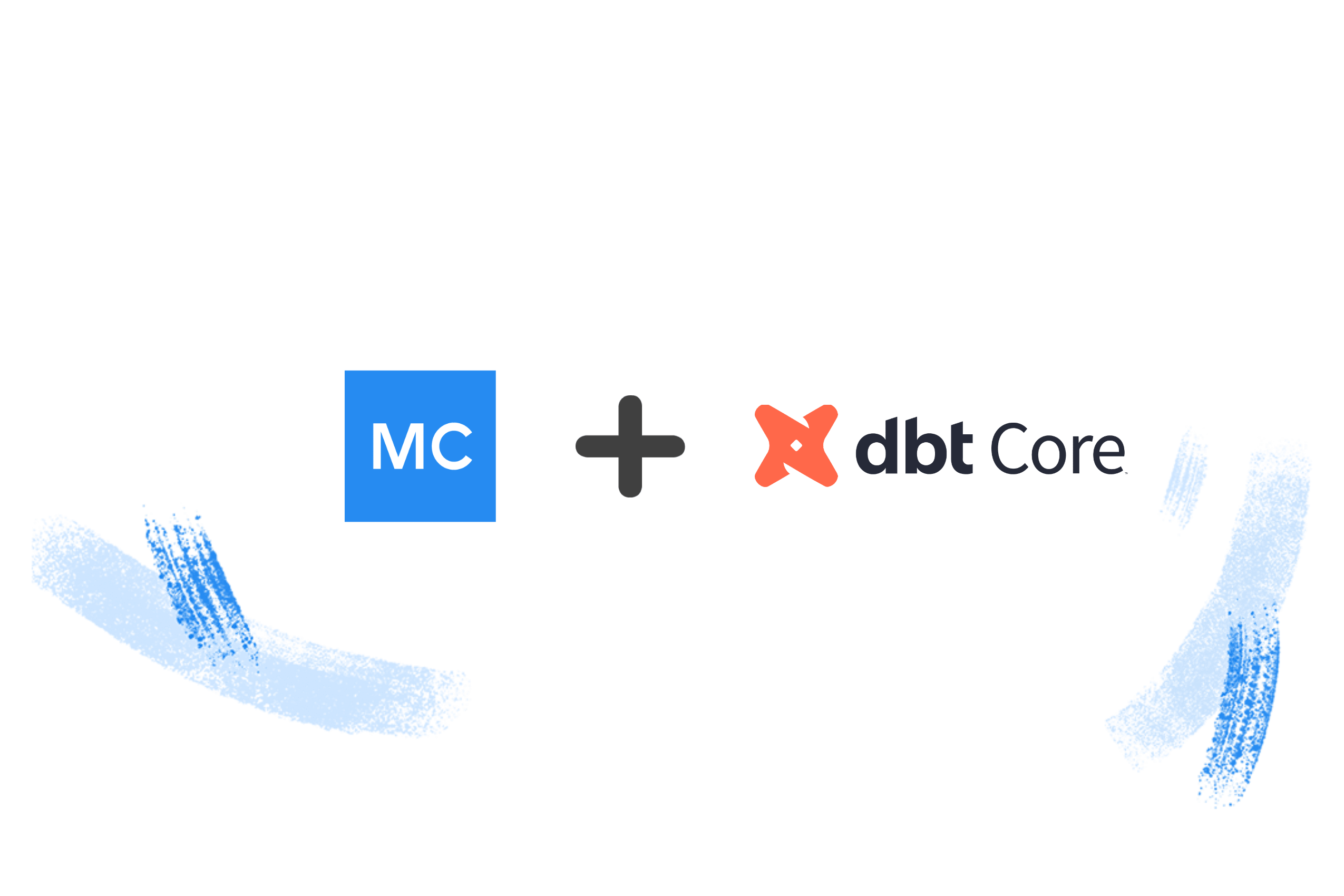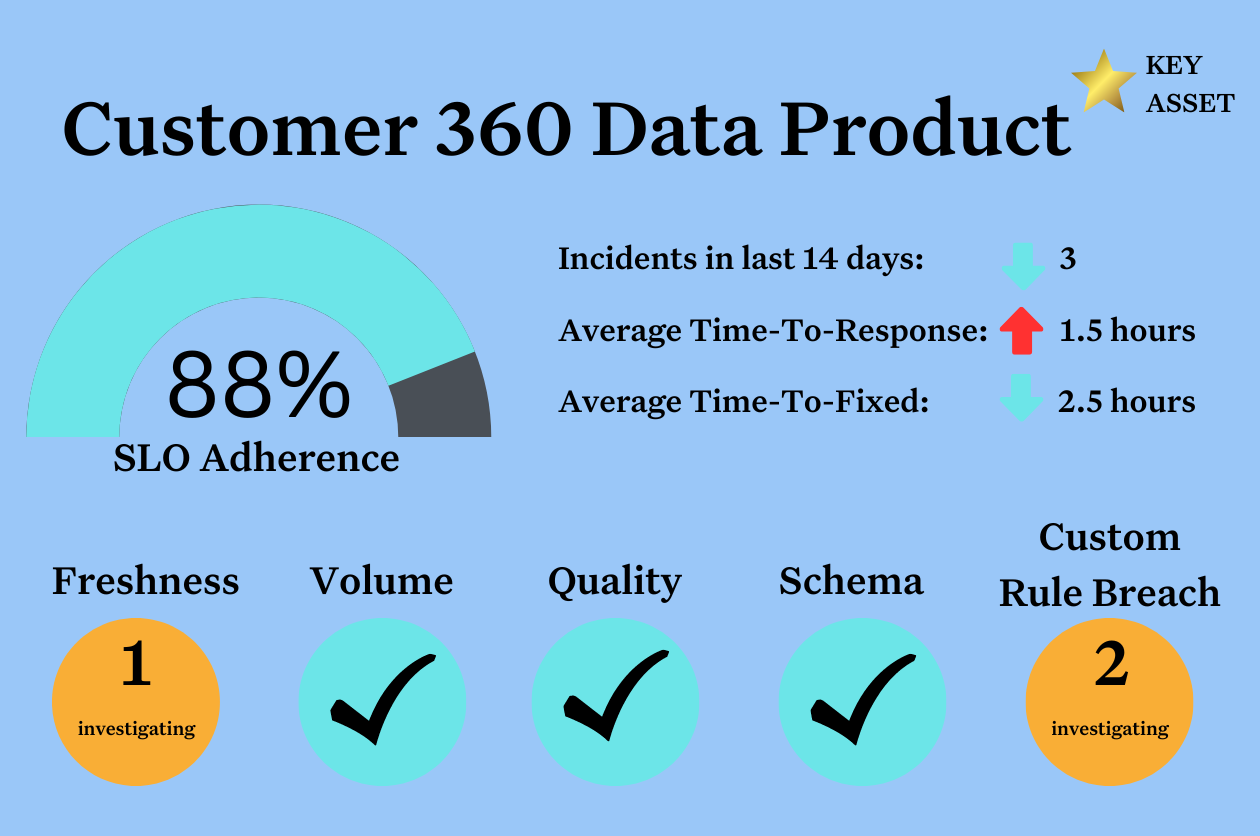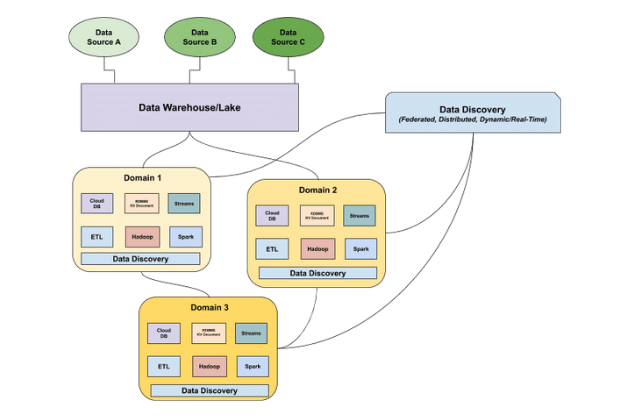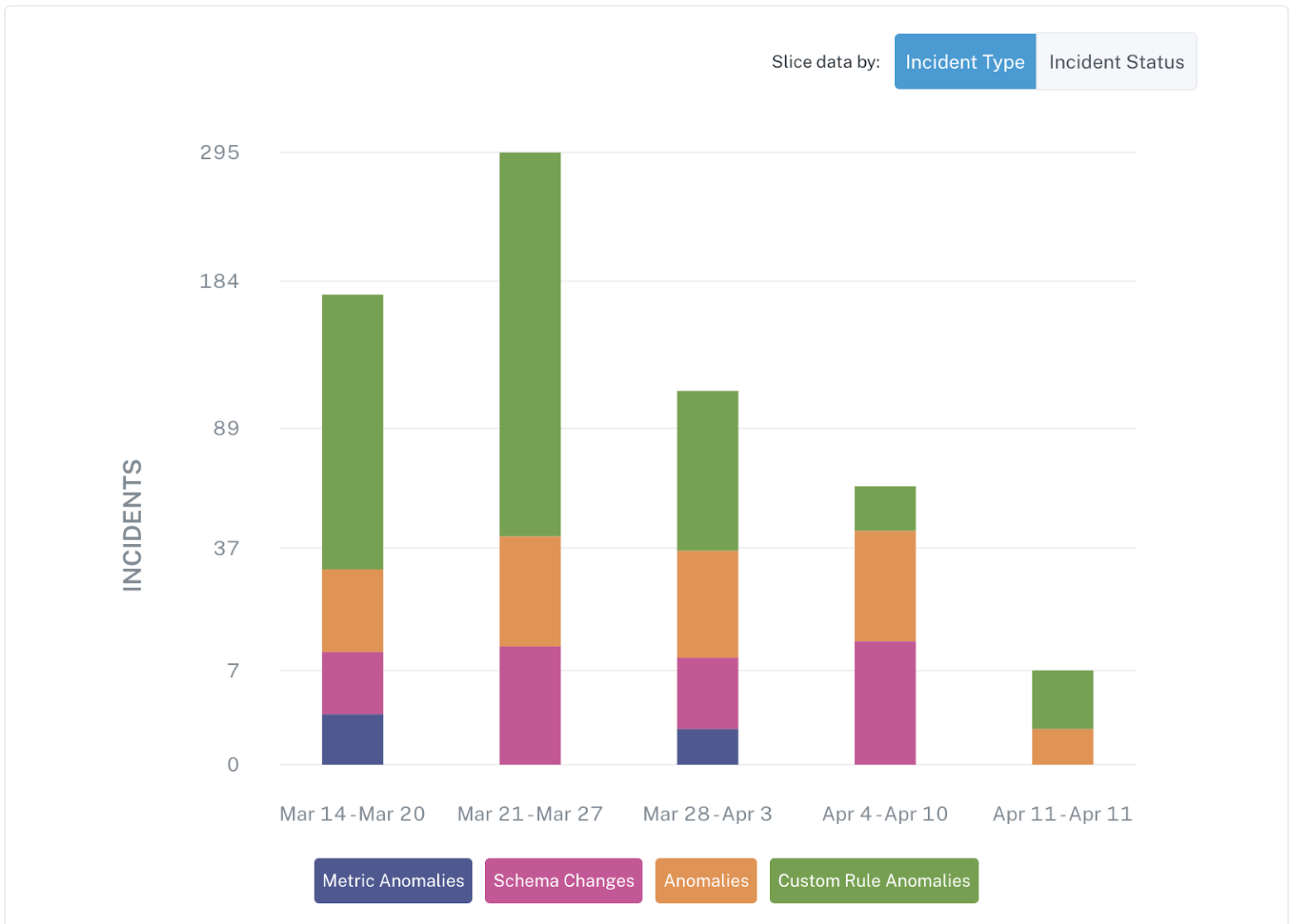Snowflake Summit 2024 Keynote Recap: The Era of Enterprise AI

We’re covering the Snowflake Summit conference keynote for the third straight year (check out our 2022 and 2023 recaps). For Snowflake Summit 2024, festivities have moved from the Las Vegas desert to the San Francisco bay—and with its return to the tech capital came a whole list of buzzy new announcements.
Table of Contents
Setting the Stage—Conference Pageantry and Neon Vibes
Crossing the bigger-than-ever exhibitor “basecamp,” we shuffle to the keynote stage where we’re greeted by tasteful conference techno, lazer lights, and rollerbladers with ski poles.
The Moscone Center is one of the few locations that could hold this many people (rumors of a record 16,000 attendees this year add to the buzz), but still feel expansive. The keynote stage is the same.
Capacity is massive and seats fill up gradually in the proceeding hour. One of my seatmates strikes up some small talk immediately disclaiming that he is on the business side and not very close to the tech, but excited to see what’s new.
As we wait, I Google to see if I can grab a sneak peek of any dropping news.
It’s hard to feel bad for a tech juggernaut, especially one that just announced record earnings, but I do feel a pang of empathy for the Snowflake press team as I’m hit with a wall of stories covering their denial of any culpability in the Ticketmaster breach. It looks like Snowflake is playing the cards close to the vest this year.
This year the stage will feature co-founder Benoît Dageville, EVP of product, Christian Kleinerman, and new CEO Sridhar Ramaswamy. Vegas is not laying odds on whether AI will feature prominently.
The opening video starts with big shots at big companies extolling the power of Snowflake. Fox, Paramount, and State Street rattle off one liners in quick succession.
It doesn’t really matter what they are saying–Snowflake is showing they have captured the hearts and minds of the C-suite in a way that we probably haven’t seen since Microsoft. Much of the keynote is directed to developers, but it would be a mistake to overlook what has made Snowflake a market juggernaut.
Getting Geeky with Benoît
After a short welcome and introduction from Sridhar Ramaswamy, Benoît takes the stage. There is an authenticity and energy to founder speakers that is hard to replicate, and Snowflake is wise to harness his swagger.
He gets a warm welcome from the crowd and immediately dives into the strategic vision of Snowflake which he outlines across 5 pillars. In a nutshell:
- Data: The ability for Snowflake to handle all structured and unstructured data types.
- Compute: Elastic demand to run on any workloads. Not just separating compute from storage, but “compute from compute” with multiple workloads running on the same data.
- Models: Access to world class AI and LLM models including CortexAI and Arctic.
- Governance: Snowpark Container Services and a unified platform for data and governance. “This is AI for enterprise, not AI for planning your next vacation.”
- Collaboration: Native apps and data sharing so you can share across regions and organizations.
His best line which drew some laughs was during the compute section when he reassured the audience that Snowflake was not a SQL engine contrary to what some might believe, “trust me I was there.” The long-term investment in the Dataflow engine, we are reminded, is the secret sauce that makes Snowflake the most efficient on the market.
Throughout this overview of the big picture he hammered what is undoubtedly the central pillar of Snowflake’s strategic vision: simplicity.
Taking A Journey With Christian Kleinerman
The rest of the keynote was MCed by Snowflake EVP of product Christian Kleinerman. He’s well suited to the role as a natural showman. You can feel the spontaneous energy coming from him, which is a welcome change from tightly scripted remarks, teleprompter reading, and stage blocking.
This year each product announcement is followed by a thumping sound effect letting the audience know it’s time to clap and creating a sense of building momentum. And on their own merits, the parade of announcements is genuinely exciting.
In this parade it’s easy to lose sight of what is perhaps the most ambitious move Snowflake is making. It’s not new and it’s not something they are trying to hide, but this year it became clear that they may be able to execute on the vision of being the “iPhone of data apps.”
For a company that owns the C-Suite like Microsoft, this Apple platform and tax vision is potentially game changing. In years past, it looked like the Snowflake Marketplace might sell you a ML app or a LLM model. As buzzy as those things are, they are pocket change and rapidly becoming commoditized. What Snowflake actually wants to sell you is each part of the modern data stack.
The exhibitor “basecamp” that is 8x the size of their competitors? All future apps to be purchased on your iPhone AI data cloud.
But let’s not digress too much. Let’s hop into each section of Christian’s talk: data, apps, AI.
Strengthening the Data Foundation
DocumentAI, Dynamic Tables, Iceberg, and Polaris
Christian starts with reminding the crowd of the power of one of last year’s big announcements (and perhaps most unfortunately named feature): DocumentAI. This bland sounding feature actually describes the incredible capability to use natural language to ask questions about documents.
With flashing strobes and a big thump Christian announces DocumentAI will move to general availability. The well prompted crowd shows a fair amount of enthusiasm which is soon dwarfed by their reaction to Christian’s next announcement on the general availability of Dynamic Tables.
Dynamic Tables (which Monte Carlo supports) helps to transform data on load without the need for an additional target table. This feature simplifying the movement of data is exciting for all the data and analytical engineers in attendance.
Serverless Tasks, the open sourcing of the Polaris catalog, and the general availability of Iceberg across all crowds also get mentions and strong responses from the crowd. You have to wonder if Iceberg was set to get a greater share of the spotlight prior to the Databricks announcement earlier this morning regarding their acquisition of Tabular, the company founded by the original creators of Apache Iceberg.
Interlude with Microsoft CVP Arun Ulagaratchagan
Arun took the stage next in a section that was a bit shoe-horned to demonstrate their partnership with Microsoft. Broad remarks on the importance of partnership, open source data formats, interoperability and Microsoft Fabric were made.
While a bit tangential, it is nice to see the direction these platforms are taking toward interoperability and having Fabric OneLake queryable by Snowflake (even if it may be built on the back of Delta tables).
Governance, Compliance, Lineage
Christian strode back on stage for the next set of data foundation announcements. Some of the bigger features highlighted included:
- Universal Search: The one search bar that will help you find everything. Now generally available.
- Internal Marketplace: An extension of the Snowflake Marketplace but curated for your organization. Now in private preview
- AI Object Description: Leveraging CortexAI to automatically generate object descriptions. This is a feature included in many data catalogs that can sometimes seem superficial and counterintuitive. What you really want to understand from documentation is not usually what AI can intuit.
- Data classification and custom classification: The ability to specify properties at the schema level or using specific rules to better identify, tag, and govern your data.
- Object Insights Interface: Horizon now contains upstream and downstream data lineage for a table within the Snowflake ecosystem. This includes ML lineage to models which is exciting. Snowflake has also introduced some basic data quality rule functionality.
Build and distribute apps
Container Services and Native Apps
This was the heart of the keynote and got the most energy from the crowd. It’s also the heart of their ambitious “iPhone” of the modern data stack strategy I detailed above.
Christian relays the positive feedback Snowflake has received on both services before revealing that Snowflake Native Apps and Container Services will be fully integrated. So in other words, the native app framework that allows apps to be built, deployed, and monetized through the marketplace (and skip the procurement and security reviews) is now connected with the ability for developers to containerize their workloads in an accelerated dev cycle.
I ran into a former colleague launching a financial application startup that is planning to aggressively take advantage of Snowpark Container Services and Native Apps. For them, these aren’t features, it’s going to be a big component of their competitive advantage.
Demo Series with Jeff Hollan
Because “we’re integrating Container Services and Native Apps” undersells the vision, Snowflake Director of Product Management Jeff Hollan comes out to demonstrate. His energy is infectious and he’s clearly having fun, bad puns and all (I’m so excited I can barely contain myself).
We get three quick and compelling demos showing:
- An app that uses hybrid tables to monitor telecom infrastructure uptime,
- A graph analytics native app that analyzes cell phone tower location and network resiliency, and
- A GenAI model running in Snowpark containers that is classifying the sentiment of customer support tickets and helping to generate responses.
All of the demos are impressive, but the crowd is especially responsive to the graphs analytics app as it dawns on them that a whole host of solutions that may have required quarter or year long procurement cycles could now be at their fingertips in minutes (if they have some spare Snowflake credits rattling around).
This is when it also dawns on me that Snowflake’s unique position of owning the data storage layer gives them an incredible opportunity not just to market a few shallow ML marketing spend optimization ML apps but to be the distribution channel for the modern data stack.
“If you can dream it, you can build it in Snowflake.”
DevOps, Snowflake Trail, and Notebooks
Christian strides back on stage and takes a moment to feed off of Jeff’s energy and demo enthusiasm. He then quickly covers some features that I personally found to be among the most exciting.
Data reliability engineering has been rapidly maturing and trying to reach the auspicious milestones of site reliability engineering. Only recently have data teams started to treat their query code like their application code with processes like version control and pull requests.
Monte Carlo, for example, will automatically correlate a code change to any data anomalies that may result from it.
Christian’s announcements are in this vein of making query code a first class citizen including Git integration, database change management, Snowflake Notebooks and Snowflake CLI. He then also announced Snowflake Trail–a new observability (think application performance management not data observability) service that will help monitor code telemetry (metrics, traces, logs) across Snowflake.
Accelerate AI
We have now made it to the third and final section of the three hour keynote and while the announcements are still exciting, energy levels are definitely starting to wane.
Christian starts with asking the crowd who uses Pandas to do machine learning? And plays off the lack of raised hands joking, “looks like only Benoit.” Still, the Snowpark Pandas API entering public preview is a welcome addition. We then get a review of Snowflake end-to-end machine learning capabilities including the feature store and model registry (which Monte Carlo takes advantage of).
We’re now at the big AI announcements: Arctic, Snowflake Copilot, Cortex AI and Cortex Search.
Christian puts Arctic, the LLMs built and released by Snowflake in the proper context. He didn’t overhype it as the next ChatGPT. He also struck the right balance between plugging its benefits in specific functions like generating SQL while pointing out there are a lot of models in the market with barely distinguishable performance metrics.
Christian then plugged the more than 20,000 people using Snowflake Copilot as part of generating or fixing code in Snowflake before announcing that it is now generally available.
CortexAI, which allows any user to query the data using natural language, seemed to be positioned a bit oddly as a replacement for data analysts and as a result got a more muted response from the very human crowd.
Interlude with Snowflake Cortex with Amanda Kelly
Amanda Kelly, Director of Product Management at Snowflake entered the stage for a clearly very well-rehearsed demo on Snowflake’s CortexAI, Snowflake’s fully managed service for hosting LLMs to –you guessed it – simplify the process for enterprise businesses to build GenAI apps.
It was pretty impressive to see her get a proof of concept for an app up and running within Snowflake in just minutes, and on the fly she prompted the LLM (in this case Mistral) to write an email “using a lot of happy emojis” – to which it happily and automatically obliged.
The Big Finale
And then finally, for the penultimate announcement, Christian the Showman, took the biggest risk I’ve ever seen at a major tech keynote. It was fun, filled with promise, and a flop.
I love that he and Snowflake went for it, and I hope the result doesn’t create future overly scripted keynotes. After repeating, “Cortex Search is so easy anyone can create a chatbot.” He proceeds to endeavor to prove his point by inviting a random member of the audience to conduct the next demo.
What followed was a keynote demonstration for the ages.
Our demo-er, Alicia, was truly a random member of the audience. Admitting that she’d only logged into Snowflake “a few times,” Alicia was excited to jump in head first. Unfortunately this ambitious, spontaneous demo ground to a halt as we learned that anyone can create a chatbot after a few attempts with Christian Kleinerman over your shoulder directing you where to click.
Ultimately, it’s a powerful message. Cortext Search can create a chatbot that only responds to information it knows within a professional context. It doesn’t know how to encourage your kids to eat more broccoli.
Of course, Christian couldn’t resist the “oh and one more thing” Jobsian conference post-credits announcement. And in this regard, he certainly delivered. As we leave the keynote all of our Snowflake accounts have been transitioned to Dark Mode by default. A good ending to a good keynote.
Two years ago we had data warehouses and lakehouses. Today we have AI data clouds and data intelligence platforms. But the big takeaway this year is that data remains one of the most innovative and exciting industries to be in. I wouldn’t bet against these modern data platforms finding a way to make reality match the hype.
Our promise: we will show you the product.
 Product demo.
Product demo.  What is data observability?
What is data observability?  What is a data mesh--and how not to mesh it up
What is a data mesh--and how not to mesh it up  The ULTIMATE Guide To Data Lineage
The ULTIMATE Guide To Data Lineage 






